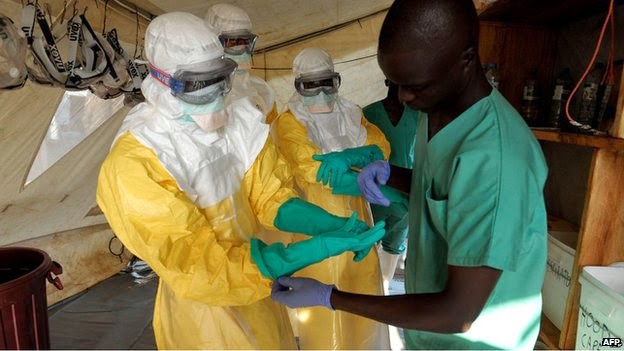Ok, time for another dose of my warped sense of humor. Past installments have included confessions that probably fall in the realm of inappropriate sharing, or TMI (see list at the end for documentation), and so does this one. But then, what's a blog for if not to bore, repulse, and dismay one's readers?
One category of humor that tickles me is funny made-up words or neologisms. Several years ago I gave some examples of this in my blog, "Does Your Pokemon Have Rectitude?" At that time I was quite intellectual about it, referring to a weekly feature by the Washington Post called Style Invitational, in which readers are invited to take part in various word-play contests. This naturally attracts people with pretty good vocabularies and highly developed verbal abilities. For example, in one contest participants took ordinary words, changed them by adding, subtracting or substituting one letter and coming up with a new definition, such as:
Of course, some might argue that although these examples require a certain degree of intellect to create and to understand, they also require a certain degree of mental disturbance to find them funny. Yup, c'est moi, and today we're going to lower the bar considerably. Be warned.
A number of years ago my wife and I received a forwarded email that contained a list of made-up words for things that "needed" to be in the dictionary. For example, the new word that was offered for that stuff on the inside of a window where a cat or a dog sits looking out and touches the glass with its nose was "Snotkiss." And the experience of walking through your house but forgetting where you are going as "Destinesia."
There were many others but now we can't find the list and don't recall other examples. However, a little searching on the internet produces many sources of new words that offer a rich supply of this kind of humor. (See, for example, Rich Hall's collections of what he dubbed "Sniglets.") In the examples that follow I won't give the source of each word in order to make for easier chuckling -- I'll give the links at the end instead. A few of them I've tweaked and modified a little, and some I even made up myself, but I won't admit which ones......
First off are some examples that relate to cognitive malfunction (more common among Geezers), along the lines of Destinesia:
One category of humor that tickles me is funny made-up words or neologisms. Several years ago I gave some examples of this in my blog, "Does Your Pokemon Have Rectitude?" At that time I was quite intellectual about it, referring to a weekly feature by the Washington Post called Style Invitational, in which readers are invited to take part in various word-play contests. This naturally attracts people with pretty good vocabularies and highly developed verbal abilities. For example, in one contest participants took ordinary words, changed them by adding, subtracting or substituting one letter and coming up with a new definition, such as:
- Ignoranus (n.): A person who is both stupid and an asshole.
- Intaxication (n.): Euphoria at getting a tax refund, which lasts until you realize it was your money to start with.
- Dopeler Effect (n.): The tendency of stupid ideas to seem smarter when they come at you rapidly.
- Beelzebug (n.): Satan in the form of a mosquito, that gets into your bedroom at three in the morning and cannot be cast out.
Of course, some might argue that although these examples require a certain degree of intellect to create and to understand, they also require a certain degree of mental disturbance to find them funny. Yup, c'est moi, and today we're going to lower the bar considerably. Be warned.
A number of years ago my wife and I received a forwarded email that contained a list of made-up words for things that "needed" to be in the dictionary. For example, the new word that was offered for that stuff on the inside of a window where a cat or a dog sits looking out and touches the glass with its nose was "Snotkiss." And the experience of walking through your house but forgetting where you are going as "Destinesia."
There were many others but now we can't find the list and don't recall other examples. However, a little searching on the internet produces many sources of new words that offer a rich supply of this kind of humor. (See, for example, Rich Hall's collections of what he dubbed "Sniglets.") In the examples that follow I won't give the source of each word in order to make for easier chuckling -- I'll give the links at the end instead. A few of them I've tweaked and modified a little, and some I even made up myself, but I won't admit which ones......
First off are some examples that relate to cognitive malfunction (more common among Geezers), along the lines of Destinesia:
- Cranial Flatulence: Condition of the brain to cease functioning mid-sentence, leaving the user of said brain with a blank stare.
- Linguistinosis: In a conversation, knowing that you wanted to say something a few moments ago but not being able to recall what the heck it was when it is your turn to speak. Distinct from Cranial Flatulence by being less embarrassing as long as you don't admit it.
- Taskensia: (a) Closely related to destinesia, the experience of arriving somewhere in order to accomplish a task, but not being able to remember what the task was. (b) Attempting to resume a task but being unable to remember where you left off.
- Blinknesia: Leaving a car blinker on after completing a turn or lane change. Often a sign of oblivity (see below).
- Mallzheimer's: The state of confusion that is produced by entering a shopping mall wherein one forgets the reason they came, their place in the world, and possibly their very identity.
- Mallnesia: A possible precursor to Mallzheimer's. The phenomenon that occurs when you walk out of a store in the mall and have no idea which way you came from.
- Parkinesia: Having no idea where you parked the car. Often occurs in conjunction with Mallnesia.
- Confrazzled: The state of being simultaneously confused and at the end of one's wits.
- Wahoozled: The state of being simultaneously awed and confused.
- Confuzzled: Just plain confused.
- Alchological: Things that seem logical only after consuming large amounts of alcohol.
- Mouse Potato: A person who is the online equivalent of a couch potato.
- Moronasaurus: Someone whose stupidity has, or should have, caused them to become extinct.
- Bozone: The substance surrounding willfully ignorant people that stops facts and bright ideas from penetrating. The bozone layer, unfortunately, shows little sign of breaking down in the near future and may be increasing in prevalence and density.
- Hypothecary: A person so convinced of his or her own intellectual superiority that he or she feels things like the truth are beneath them. Often attempts to expound their own virtue with so-called hypotheses that bear only superficial resemblance to logic, science, or reality. Politicians, college professors, and religious fanatics are often hypothecaries and have very thick bozone layers.
- Obliviot: (a) Someone who is completely unaware of their surroundings. (b) Someone who lacks any insight about their ignorance on a topic despite ample evidence provided to them by others. (c) Someone who seems completely unaware of what others in a conversation have just said. (d) A person unaware of the beliefs, attitudes, and personality qualities of someone they are interacting with, even when those are perfectly obvious and important.
- Oblivity: (a) The defining quality of an obliviot. (b) The degree of one's lack of attention to immediate physical and social surroundings. Usually quite high during cell phone use.
- Adminisphere: The rarefied organizational layers beginning just above the rank and file. Decisions that fall from the adminisphere are often profoundly inappropriate or irrelevant to the problems they were designed to solve but require great amounts time and effort to enact.
- Assmosis: the process of seeking or obtaining advancement by kissing up to the boss rather than by working hard.
-
- Deficacious: Possessing the quality of seeming to be effective, but actually just full of crap, mierda, shiznit, and the like. Most committees and organizational self-studies are deficacious.
- Jobfusticate: To arrange matters such that to other people your job appears to be so complex and technical that nobody else (least of all your boss) can understand exactly what it is you do, thus leaving you to do pretty much what you want the way you want to do it.
- Lingoist: An individual who speaks expertly within a specific field of interest, to the exclusion of layman terminology, making it difficult for ordinary individuals who are less knowledgeable in the field to understand. Often lingoists are very good at jobfuscation.
- Metabusy: Engaged in activity directed at becoming busy, usually arising from an inability to complete a primary task given the current situation. Many committees, managers and administrators are metabusy to avoid being detected as deficacious.
- Dallywaddle: To take an excessively long time, especially involving motion on foot; to dilly-dally in going somewhere; to drag one's feet.
- Strumble: The invisible object that someone uses to cover up the fact that they really tripped due to their own clumsiness.
- Trilemma: A problem whereby you have three possibilities to consider instead of two.
-
- Ohnosecond: That minuscule fraction of time in which you realize that you’ve just made a BIG mistake.
- Ludicrism: A distinctive doctrine, system, or theory of laughable or hilarious nature because of obvious absurdity or insinuation. Unfortunately ludicrisms are often adopted as truth if repeated often enough, particularly by ignoranuses and hypthecaries.
- Irritainment: Entertainment and media spectacles that are annoying but you find yourself unable to stop watching them.
- Accidue: Small pieces of broken glass, metal and other debris that remain at the scene of an accident for months after.
- Accidon't : To avoid accidue.
And now that your brain is about to turn to mush, here's the grand finale:
- Manabananabulimichick: A bulimic rooster that likes bananas.
___________________________________________
Sources and Resources
Sniglets-- Rich Hall
Unwords.Com
Urban Dictionary.Com
Unusual Words and Definitions
Cool Words
Jasperfforde.Com--Made-Up Words
Previous Snow Crash Entries Documenting Derangement
"I'll Be Right Back" -- And Other Famous Last Words...
It's a Guy Thing
What, Me Worry?
Why I Hate Liver
Geezer Olympics: Competitive Complaining







